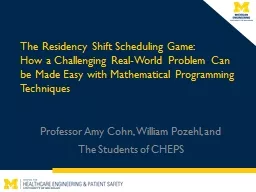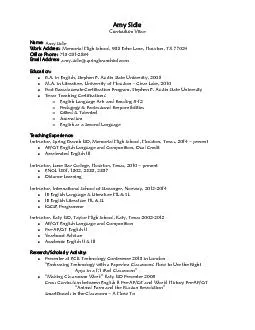PPT-Professor Amy Cohn, William Pozehl, and
Author : phoebe-click | Published Date : 2017-12-02
The Students of CHEPS The Residency Shift Scheduling Game How a Challenging RealWorld Problem Can be Made Easy with Mathematical Programming Techniques The purpose
Presentation Embed Code
Download Presentation
Download Presentation The PPT/PDF document "Professor Amy Cohn, William Pozehl, and" is the property of its rightful owner. Permission is granted to download and print the materials on this website for personal, non-commercial use only, and to display it on your personal computer provided you do not modify the materials and that you retain all copyright notices contained in the materials. By downloading content from our website, you accept the terms of this agreement.
Professor Amy Cohn, William Pozehl, and: Transcript
Download Rules Of Document
"Professor Amy Cohn, William Pozehl, and"The content belongs to its owner. You may download and print it for personal use, without modification, and keep all copyright notices. By downloading, you agree to these terms.
Related Documents














